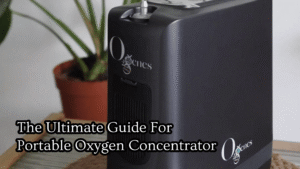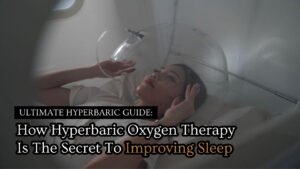Autism Spectrum Disorders (ASD) are a complex range of neurodevelopmental conditions that affect individuals in various ways, primarily characterized by challenges in social interaction, communication, and repetitive behaviors. As researchers and healthcare professionals seek innovative approaches to improve the lives of those with ASD, hyperbaric oxygen treatment (HBOT) has emerged as a potential intervention. This discussion delves into the application of HBOT in the context of ASD, aiming to provide insights into its mechanisms, efficacy, and implications.
Traditionally, hyperbaric oxygen treatment (HBOT) is indicated in several clinical disorders include decompression sickness, healing of problem wounds and arterial gas embolism. However, some investigators have used HBOT to treat individuals with autism spectrum disorders (ASD). A number of individuals with ASD possess certain physiological abnormalities that HBOT might ameliorate, including cerebral hypoperfusion, inflammation, mitochondrial dysfunction and oxidative stress. Studies of children with ASD have found positive changes in physiology and/or behavior from HBOT. For example, several studies have reported that HBOT improved cerebral perfusion, decreased markers of inflammation and did not worsen oxidative stress markers in children with ASD.
Most studies of HBOT in children with ASD examined changes in behaviors and reported improvements in several behavioral domains although many of these studies were not controlled. Although the two trials employing a control group reported conflicting results, a recent systematic review noted several important distinctions between these trials. In the reviewed studies, HBOT had minimal adverse effects and was well tolerated. Studies which used a higher frequency of HBOT sessions (e.g., 10 sessions per week as opposed to 5 sessions per week) generally reported more significant improvements. Many of the studies had limitations that may have contributed to
inconsistent findings across studies, including the use of many different standardized and non-standardized instruments, making it difficult to directly compare the results of studies or to know if there are specific areas of behavior in which HBOT is most effective.
The variability in results between studies could also have been due to certain subgroups of children with ASD responding differently to HBOT. Most of the reviewed studies relied on changes in behavioral measurements, which may lag behind physiological changes. Additional studies enrolling children with ASD who have certain physiological abnormalities (such as inflammation, cerebral hypoperfusion, and mitochondrial dysfunction) and which measure changes in these physiological parameters would be helpful in further defining the effects of HBOT in ASD.
FAQs
Q1: What is hyperbaric oxygen treatment (HBOT)?
A1: HBOT is a medical therapy involving the inhalation of pure oxygen within a pressurized chamber, typically at pressures greater than sea level atmospheric conditions. This higher concentration of oxygen aims to improve oxygen delivery to tissues throughout the body.
Q2: How does HBOT work in the context of autism spectrum disorders (ASD)?
A2: The exact mechanisms are not fully understood, but it is believed that HBOT may enhance cerebral blood flow, reduce inflammation, and promote neuroplasticity. These effects could potentially benefit individuals with ASD by addressing some underlying factors.
Q3: What is the current status of research on HBOT for ASD?
A3: Research on HBOT for ASD is ongoing, with studies exploring its potential benefits. While some studies suggest positive outcomes, there is no conclusive evidence to consider it a standard treatment for ASD.
Q4: Are there potential risks or side effects associated with HBOT for individuals with ASD?
A4: Risks and side effects may include barotrauma (ear or sinus discomfort), oxygen toxicity, or anxiety related to the chamber experience. Consultation with healthcare professionals and individual assessment are vital to minimize risks.
Conclusion
Hyperbaric oxygen treatment (HBOT) represents an intriguing area of exploration in the context of Autism Spectrum Disorders (ASD). While promising, it is important to acknowledge that research into the efficacy of HBOT for ASD is ongoing, and there is no definitive consensus regarding its use as a standard treatment. As with any medical intervention, it is crucial to approach HBOT for ASD under the guidance of healthcare professionals who can provide personalized assessments and recommendations. The application of HBOT in ASD therapy holds potential, and further research will help to clarify its role in enhancing the lives of individuals and families affected by ASD.






